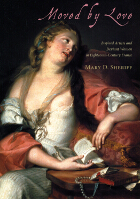2 books about H

Love, H
The Letters of Helene Dorn and Hettie Jones
Hettie Jones
Duke University Press, 2016
"It works, we're in business, yeah Babe!" So begins this remarkable selection from a forty-year correspondence between two artists who survived their time as wives in the Beat bohemia of the 1960s and went on to successful artistic careers of their own.
From their first meeting in 1960, writer Hettie Jones—then married to LeRoi Jones (Amiri Baraka)—and painter and sculptor Helene Dorn (1927–2004), wife of poet Ed Dorn, found in each other more than friendship. They were each other's confidant, emotional support, and unflagging partner through difficulties, defeats, and victories, from surviving divorce and struggling as single mothers, to finding artistic success in their own right.
Revealing the intimacy of lifelong friends, these letters tell two stories from the shared point of view of women who refused to go along with society’s expectations. Jones frames her and Helene's story, adding details and explanations while filling in gaps in the narrative. As she writes, "we'd fled the norm for women then, because to live it would have been a kind of death."
Apart from these two personal stories, there are, as well, reports from the battlegrounds of women's rights and tenant's rights, reflections on marriage and motherhood, and contemplation of the past to which these two had remained irrevocably connected. Prominent figures such as Allen Ginsberg and Timothy Leary appear as well, making Love, H an important addition to literature on the Beats.
Above all, this book is a record of the changing lives of women artists as the twentieth century became the twenty-first, and what it has meant for women considering such a life today. It's worth a try, Jones and Dorn show us, offering their lives as proof that it can be done.
[more]

Moved by Love
Inspired Artists and Deviant Women in Eighteenth-Century France
Mary D. Sheriff
University of Chicago Press, 2004
In eighteenth-century France, the ability to lose oneself in a character or scene marked both great artists and ideal spectators. Yet it was thought this same passionate enthusiasm, if taken to unreasonable extremes, could also lead to sexual deviance, mental illness—even death. Women and artists were seen as especially susceptible to these negative consequences of creative enthusiasm, and women artists, doubly so.
Mary D. Sheriff uses these very different visions of enthusiasm to explore the complex interrelationships among creativity, sexuality, the body and the mind in eighteenth-century France. Drawing on evidence from the visual arts, literature, philosophy, and medicine, she portrays the deviance ascribed to both inspired men and women. But while various mythologies worked to normalize deviance in male artists, women had no justification for their deviance. For instance, the mythical sculptor Pygmalion was cured of an abnormal love for his statue through the making of art. He became a model for creative artists, living happily with his statue come to life. No happy endings, though, were imagined for such inspired women writers as Sappho and Heloise, who burned with erotomania their art could not quench. Even so, Sheriff demonstrates, the perceived connections among sexuality, creativity, and disease also opened artistic opportunities for creative women took full advantage of them.
Brilliantly reassessing the links between sexuality and creativity, artistic genius and madness, passion and reason, Moved by Love will profoundly reshape our view of eighteenth- century French culture.
Mary D. Sheriff uses these very different visions of enthusiasm to explore the complex interrelationships among creativity, sexuality, the body and the mind in eighteenth-century France. Drawing on evidence from the visual arts, literature, philosophy, and medicine, she portrays the deviance ascribed to both inspired men and women. But while various mythologies worked to normalize deviance in male artists, women had no justification for their deviance. For instance, the mythical sculptor Pygmalion was cured of an abnormal love for his statue through the making of art. He became a model for creative artists, living happily with his statue come to life. No happy endings, though, were imagined for such inspired women writers as Sappho and Heloise, who burned with erotomania their art could not quench. Even so, Sheriff demonstrates, the perceived connections among sexuality, creativity, and disease also opened artistic opportunities for creative women took full advantage of them.
Brilliantly reassessing the links between sexuality and creativity, artistic genius and madness, passion and reason, Moved by Love will profoundly reshape our view of eighteenth- century French culture.
[more]
READERS
Browse our collection.
PUBLISHERS
See BiblioVault's publisher services.
STUDENT SERVICES
Files for college accessibility offices.
UChicago Accessibility Resources
home | accessibility | search | about | contact us
BiblioVault ® 2001 - 2025
The University of Chicago Press









